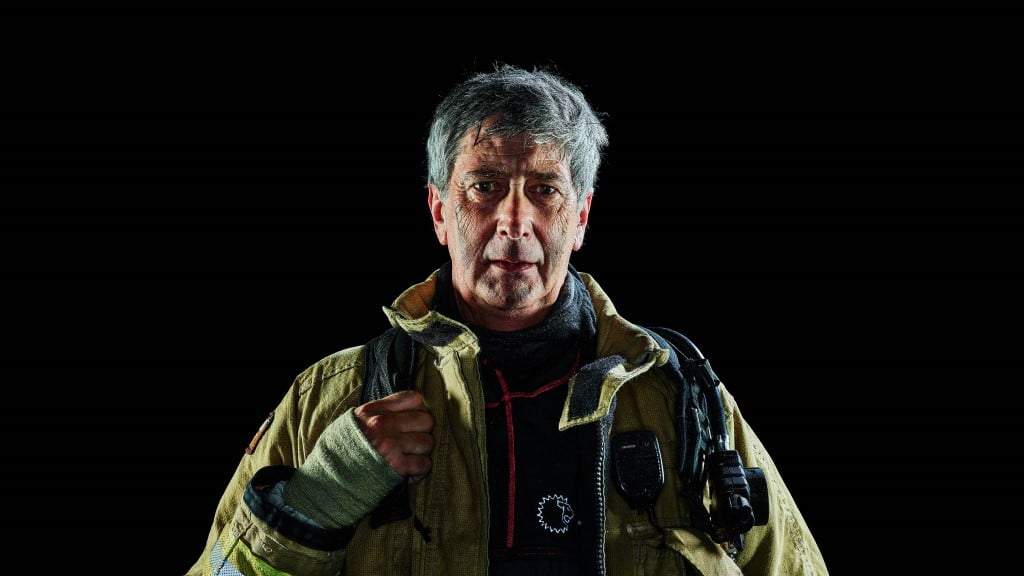IFSJ Exclusive: Fighting fire with technology
- July 10, 2023
- 9:18 am


Iain Hoey
Share this content
From digital simulation to gas and carbonaceous training, Mathé Koenen unveils how LION’s NFTT is revolutionising firefighter training
Who are you, and what is your job position within LION?
I’m an electrical and mechanical engineer and also a firefighter, a role I took on in 1983, which was 40 years ago.
Over the years, I’ve had a variety of positions, including serving as the head of a fire brigade.
Following that, I worked as an assistant plant manager and then joined an international centre focusing on extrication techniques.
Additionally, I worked for Falk Fire Training, which is one of the largest fire training organisations in Europe.
We provided diverse types of fire training such as industrial, residential, urban firefighting, and structural. There, I led the training department and delivered trainings myself.
As for my role at LION, I wear several hats: I am a trouble-shooter, consultant, and trainer.
You’re here to discuss a new concept from LION, the New Fire Training Technology or NFTT. Could you tell us more about it?
Certainly. The NFTT, a term coined by our director, represents our response to the world’s increasing environmental demands.
It’s not just about environmental impact but also significantly about the health and safety of our instructors and students.
The NFTT gave birth to what we refer to as digital firefighting technology. This involves no actual heat or real smoke— we use artificial smoke—and eliminates stress.
Consequently, new students can acquire skills and knowledge effectively without the typical pressures. They can fully concentrate on the training without worrying about surrounding hazards while acclimating to new experiences like using breathing apparatus under simulated smoke and heat conditions.
It’s a significant advancement in terms of the environment and the health of firefighters in training and their instructors.
In addition to this, we specialise in gas-heated simulators. These are complementary to the digital firefighting training.
A firefighter, naturally, needs to have experience real flames, feel actual heat, and work with real breathing apparatus. Gas-simulators can do all this within a controlled setting.
With a simple push of a button, a fire is ignited and another push, it’s extinguished. The process is highly controllable and stress-free, allowing trainees to focus on refining their skills and procedures as initially learned in the digital simulation.
Before they graduate and begin their real careers, firefighters must experience real heat, smoke, stress, and master the use of breathing apparatus. This complete package of the NFTT provides valuable and efficient training.
In the past, learning to become a firefighter was a lengthy process because training mainly used wood-driven fires, which created a lot of stress and heat, making learning slower. But with the NFTT, we’re changing this.
As an experienced firefighter who has been in the field for many years and as a fire trainer, what is your honest opinion about this approach? Do you think it’s better?
It’s definitely better. I believe this combined approach of digital and gas simulations is the most comprehensive training package available.
The digital aspect alone could cater to around 75% of all training needs in firefighting. It’s beneficial not only for new firefighters but also for experienced ones.
Although some firefighters initially associate digital with children’s games and gas with cooking and yearn for “real fires,” they often overlook the negative impacts of wood-driven fires on the environment, their own health and safety, and the effectiveness of training.
We’re beginning to see a shift towards more environmentally friendly training, and we’re proud that NFTT is leading the way.
One successful element in our NFTT project is the development of an afterburner, allowing carbonaceous fire training in city centres without producing smoke.
This means the final part of the training can be performed in a realistic setting without causing significant stress to the environment.
What is the ideal blend of fire technology in a training centre?
I believe the perfect mix would be 75% digital, 15% gas, and 10% carbonaceous training.
Aren’t you concerned that the quality of training could suffer without exclusively using wood-burning methods?
To be honest, I had similar reservations when I began with digital training in 2019. I had the same misconceptions—digital was for video games, and gas was for cooking.
However, after half a year of working with these methods, I was astounded by their effectiveness.
This sequence—digital, gas, and carbonaceous—completely changed my perspective. I firmly believe this approach is the best for training, environmental impact, and health and safety.
What advice would you give for “smart” management of training facilities?
My suggestion would be to consider adopting this 75-15-10 split. It’s crucial to remember that the environment is as important as the health and safety of the students and instructors.
Moreover, this approach is more cost-effective, enabling the delivery of more trainings—a smart move financially. So, my advice is to start working within the 75-15-10 ratio.

